Ask Ethan: How bright is the Earth as seen from the Moon?

You know how bright the full Moon is. Well, from the Moon, how would the ‘full Earth’ compare?
“I put up my thumb and shut one eye, and my thumb blotted out the planet Earth. I didn’t feel like a giant. I felt very, very small.” –Neil Armstrong
When the Apollo astronauts made their trips to the Moon, they were treated to a view that no human had ever seen before: a view of the Earth from our nearest neighboring world. While practically every one of us has seen the reverse view — that of the Moon from the Earth’s surface — only a few dozen people (and a few lucky satellites) have ever seen what Earth looks like from the Moon’s surface. What’s the big difference? David Hurn wants to know:
What would be brighter: a full moon or a full earth from the moon? Would the brightness remain constant?
For those of you who’ve ever experienced it on an otherwise clear, dark night, you know for yourself how bright the full Moon is.
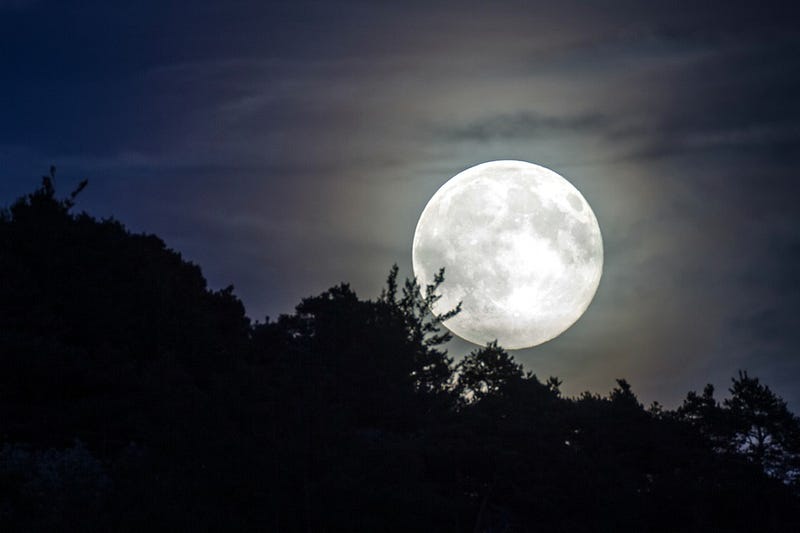
Reflecting sunlight at a distance of only 384,000 kilometers (239,000 miles) from Earth, the full Moon is by far the brightest object in the night sky. It’s 1,500 times brighter than the next brightest object, the planet Venus, and some 27,000 brighter than Sirius, the brightest star in the sky. In fact, the full Moon, all on its own, can light up an earthly sky as brightly as a big city can. It’s a tremendous source of light pollution that shines more than 40 times brighter than all the other objects in the night sky combined.
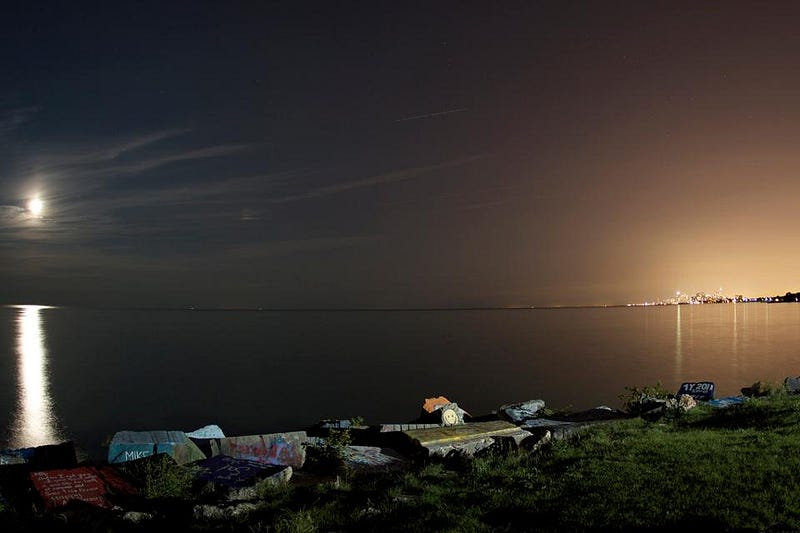
But as bright as the full Moon is as seen from Earth, the full Earth as seen from the Moon has got it beat by almost every metric possible. The Earth is about 3.67 times the diameter of the Moon, meaning that its cross-sectional area, or how big it appears in the sky, is thirteen times as great as the Moon. There’s another element at play, also: reflectivity.
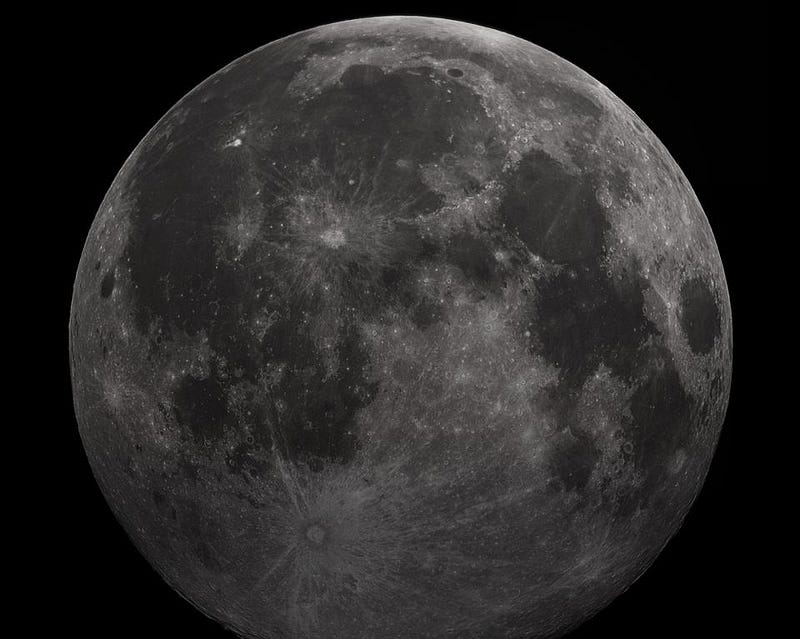
The Moon and Earth both get their brightness by reflecting sunlight, and although the Moon looks greyish-white in the sky, it’s actually much more of a charcoal color. It only appears as white-colored as it does because of how much sunlight there is to reflect. That ashy, rocky surface of the Moon is far less reflective than not only the land and the green trees and grasses of Earth’s continents, though, it’s swamped by the bright reflectivity of Earth’s water.
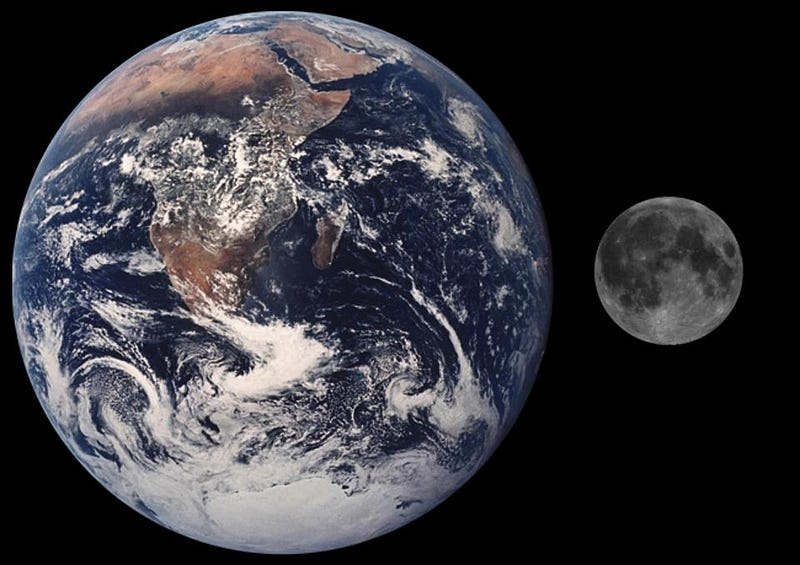
Not the deep blue of the oceans, mind you, which absorb more sunlight than the rest of Earth’s surface and even than the Moon, but the water present in clouds, ices and the shallow waters of rivers and continental shelves. Overall, the Moon reflects only 11% of the sunlight striking it, but the Earth reflects approximately 37% of the sunlight incident upon it. Put this all together, and a “full Earth” as seen from the Moon is about 43 times brighter than the full Moon is as seen from Earth. When the icecaps are larger and the cloud cover is greater — and also when the deserts are visible in the Sun — the Earth appears at its brightest, up to approximately 55 times brighter than the Moon.
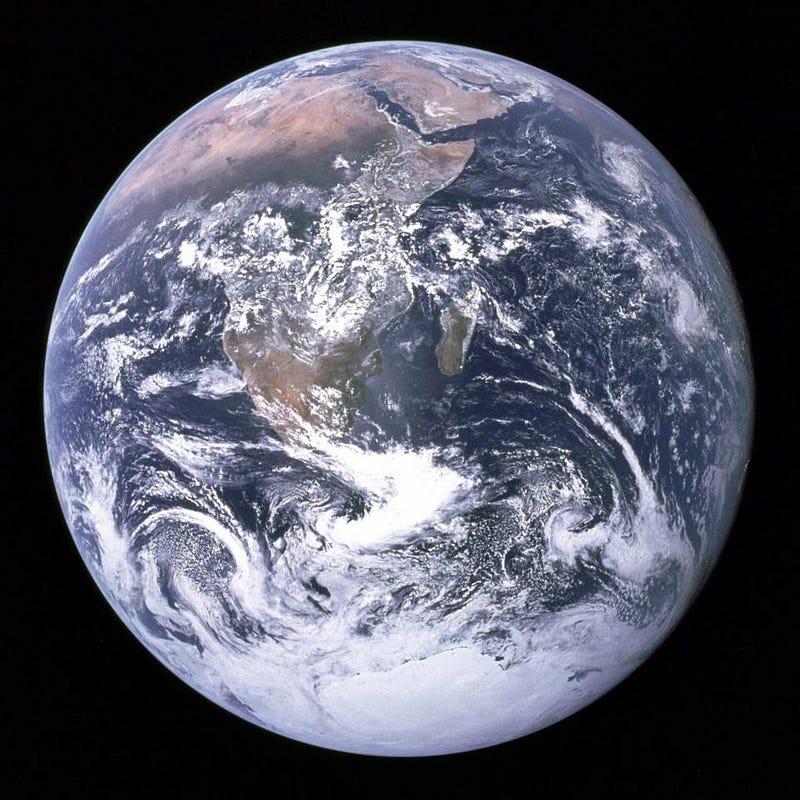
But the interesting part of the story doesn’t end there. Because the Moon is tidally locked to the Earth, we always see the same side of our lunar companion. The Earth rotates on its axis, however, meaning that the Moon appears in our skies only 50% of the time on average; the other 50%, the Moon is on the far side of our planet. That’s from our perspective; from someone on the surface of the Moon, though, Earth is in the sky 100% of the time from the near side of the Moon, while it’s visible 0% of the time from the far side.
The lone exception is the tiny sliver of the Moon which sometimes sees the Earth and sometimes doesn’t, thanks to the “rocking” motion caused by the Moon’s elliptical orbit: lunar libration.
Days and nights on the Moon last approximately two Earth-weeks apiece, and the near side of the Moon is the best place to view a “full Earth” phase, during the time when the Sun completely illuminates the Moon’s far side. The Earth, at that moment, appears 13 times larger, 3.4 times more reflective and a total of 43 times brighter than the full Moon does from Earth. Although no human has ever seen that with their own eyes — thanks to the fact that we’ve never gone to the Moon when the near side experiences night — the Japanese orbiter Kaguya has experienced it.
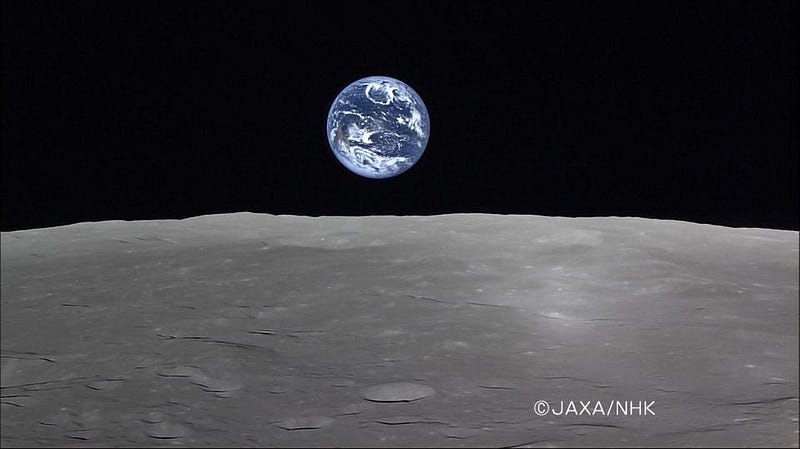
Even when the Sun isn’t out at all, there’s still plenty of light on the Moon’s surface thanks to the shining, reflected light from the Earth. It isn’t nearly as bright as sunlight; it’s about 10,000 times fainter. But the light from Earth’s surface, reflected back towards the Moon, can illuminate it all the same. This is why, when the Moon is in a crescent phase, you can still see features on the dark portion of the Moon: we call this reflected, illuminating light the phenomenon of Earthshine.
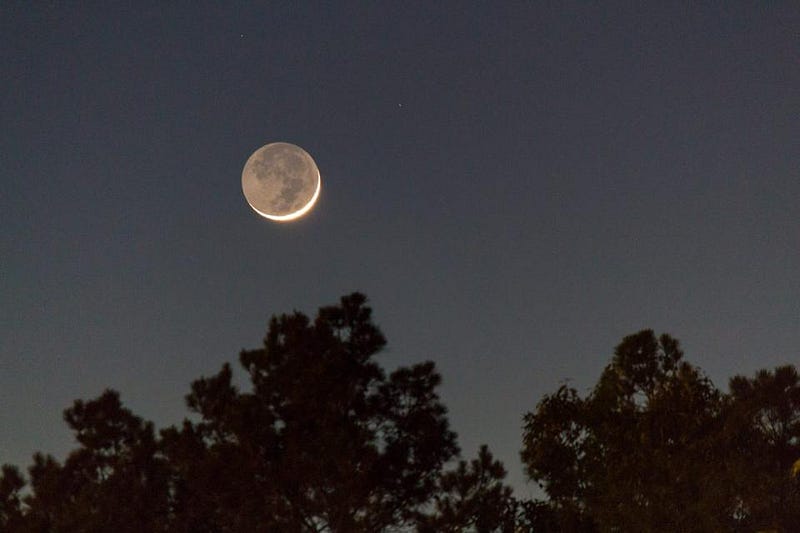
In order to be dimmer than the full Moon is as seen from Earth, less than 1/40th of the Earth can be illuminated from the Moon’s perspective. This only gives about a 12 hour window every month where the Earth’s shining light, as seen from the near side of the Moon, appears dimmer than the full Moon as seen from Earth. But there is one phenomenon that allows the Moon to experience a darkness that defeats any Moon-filled skies on Earth…
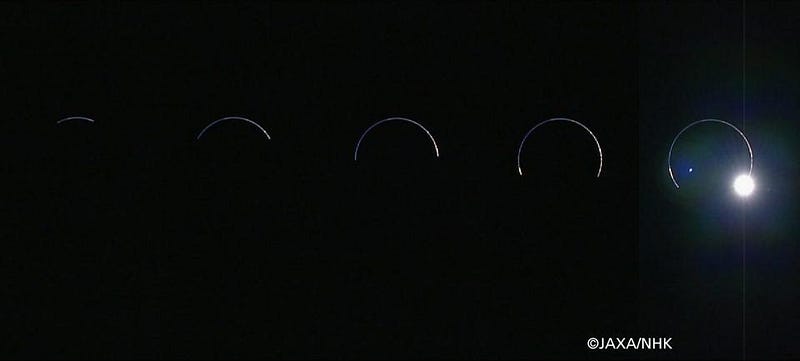
A lunar eclipse! When part of the Moon is eclipsed by Earth’s shadow, both the Sun and the Earth are invisible, and only a ring of Earth’s illuminated atmosphere can be seen. Other than that, it’s nothing but stars and planets from the Moon’s surface. The only darker time and place on the Moon? On the far side, during the lunar night.
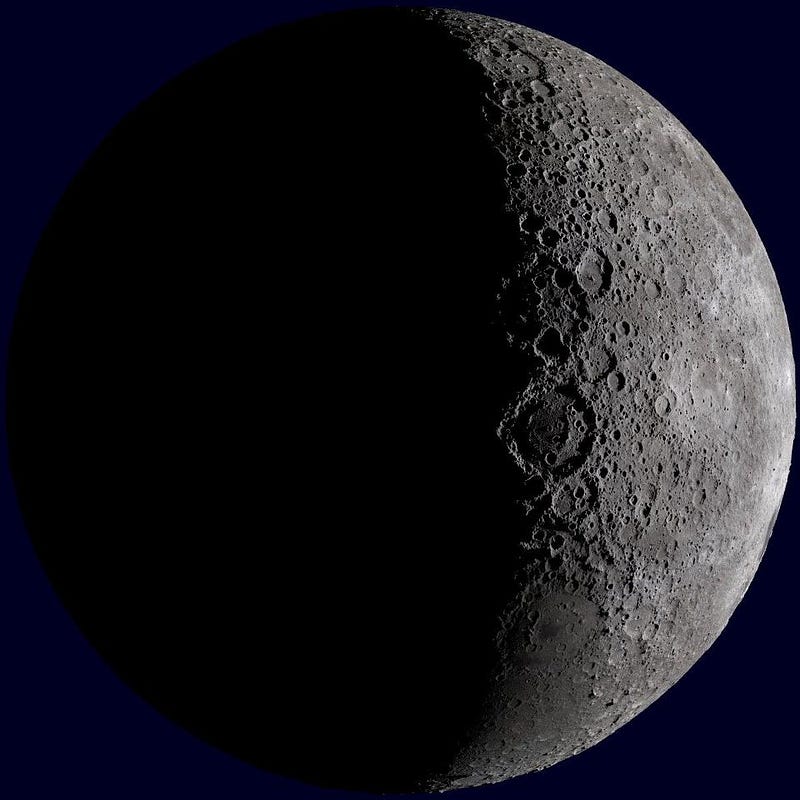
The brightness of a full Earth doesn’t remain constant, but changes as the Earth rotates and as seasons and weather patterns change. The Earth is a living planet in every sense of the word. As changeable as we perceive the Moon to be, if it were as large and diverse as Earth, the changes in seasons, icecaps, cloud cover, flora and desertification would change its brightness even further. We only call it the inconstant Moon because we don’t have the opposite view; in reality, it’s the Earth that changes by so much more!
Send in your Ask Ethan questions to startswithabang AT gmail DOT com.
This post first appeared at Forbes, and is brought to you ad-free by our Patreon supporters. Comment on our forum, & buy our first book: Beyond The Galaxy!





